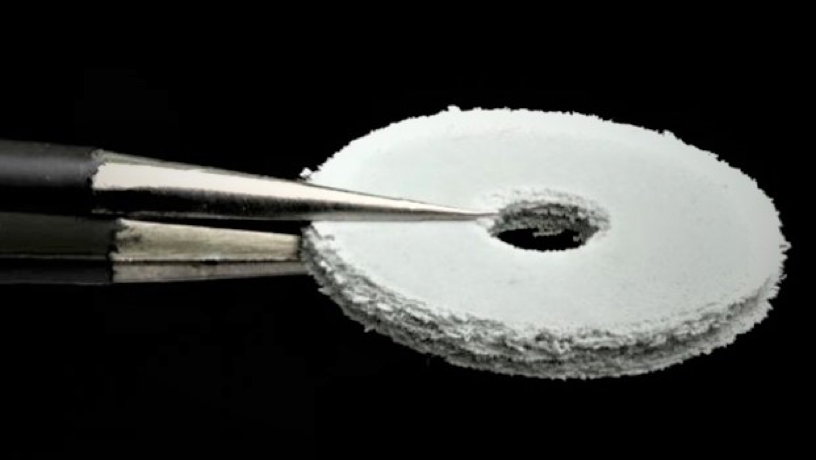When it comes to the 3D printing of metal, a process known as selective laser sintering (SLS) is most commonly used. An upside-down variation on the technique has now been developed, for printing single objects out of different materials.
In traditional SLS, a laser beam is shone down into a print bed filled with metal powder. As that beam moves back and forth in a preprogrammed pattern, it melts and fuses the powder into a solid, but only in select areas. As more powder is added, the object is gradually built up, one layer at a time.
Unfortunately, though, switching back and forth between different types of metal powder is difficult. This is because a freshly deposited layer of one type of metal powder will mix with the other metal powder that's already in the print bed. Since the two metals may have different melting temperatures, they can't necessarily be melted at the same time.
Led by Prof. Hod Lipson, scientists at New York's Columbia University have developed an alternative – and it involves shining the laser up from underneath.
Initially, a metal or polymer powder of one type is deposited in a layer, onto a glass plate. A flat print platform is then lowered down onto that plate, so that the powder is sandwiched between the two. Next, the laser is shone through the glass plate from beneath, melting and fusing some of the powder in the desired pattern.
When the print platform is subsequently raised, the solidified layer of material sticks to it. That platform is then lowered down onto another glass plate, which is covered in a layer of a different powder. As the laser moves in the same pattern that it did before, a layer of that material is then melted and fused onto the existing solidified material. Going back and forth in this fashion, a single solid object can be printed out of layers of two or more substances.

As an added benefit, because the item is constantly being lifted up out of the powder, users can see the form that it's taking. By contrast, in traditional SLS, the object is hidden by the powder that surrounds it – users don't get to see the whole thing until the printing process is complete.
"This technology has the potential to print embedded circuits, electromechanical components, and even robot components," says Lipson. "It could make machine parts with graded alloys, whose material composition changes gradually from end to end, such as a turbine blade with one material used for the core and different material used for the surface coatings."
The technique is illustrated in the following video, and is described in a paper that was recently published in the journal Additive Manufacturing.
Source: Columbia University





